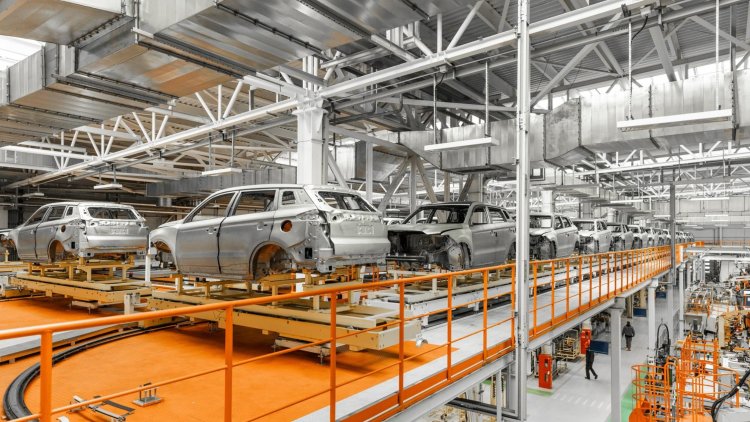Government Announces Standard Operating Procedure for Automobile Sector Under PLI Scheme
Revving up the Automobile Industry: Government announces SOPs under PLI Scheme to drive innovation and growth.

The release of SOPs to testing agencies under the PLI Auto scheme was announced by the Ministry of Heavy Industries in this location today. In order to be eligible for incentives under the PLI Auto scheme, applicants under the scheme may now submit their requests for the testing and certification of AAT products (both OEMs and components).
With this move, the Ministry is attempting to align itself with the Prime Minister's vision of Aatmanirbhar Bharat, according to Union Minister of Heavy Industries Dr. Mahendra Nath Pandey. These SOPs will not only help to achieve that but will also help to strengthen the manufacturing foothold. By doing this, the ministry hopes to increase domestic manufacturing, decrease reliance on imports, and increase employment opportunities for Indians. This initiative will assist in achieving the government's commitment to fostering entrepreneurship and skill development in the nation. Additionally, he said that it would help the country's overall economy grow. The programme is anticipated to draw sizeable investments and assist India in becoming a centre for automobile production on a global scale.
Read more: MG Comet EV Unveiled: Specs, Range, and Competitors
On September 23, 2021, the Production Linked Incentive (PLI) Scheme for the Indian Automobile and Auto Component Industry (PLI-AUTO Scheme or the Scheme) was notified by the Ministry of Heavy Industries (MHI), with a budgetary outlay of 25,938 crores. Incentives are proposed by the PLI-Auto Scheme to increase domestic production of advanced automotive technology (AAT) products and draw capital into the value chain of automotive manufacturing. Component Champions will create high-end, high-tech components for the program, and Champion OEM will create electric or hydrogen-powered cars.
The PLI Scheme's goals are:
The Production Linked Incentive (PLI) Scheme for Automobiles and Auto Components main goals are to encourage domestic production of products utilising advanced automotive technology and to draw capital into the industry's value chain.
Its main goals are to overcome cost constraints, generate economies of scale, and establish a robust supply chain for products utilising advanced automotive technology.
The programme also seeks to increase employment in the nation.
To assist the automotive industry in moving up the value chain to products with higher value-added
On November 9, 2021, MHI announced the 19 AAT vehicle categories and 103 AAT component categories that would be covered by the programme. These parts are either cutting-edge or ultra-modern automotive components, for which India has no supply chain or both. India will thus be able to increase its share in the global supply chains for advanced technology and automobiles thanks to this plan.
DVA: Domestic Value Addition
To be eligible for incentives under the scheme, applicants must reach a DVA of 50%, per the scheme's rules. The DVA across their supply chain must be calculated and presented by the auto companies and component manufacturers, who must also provide these details to the testing organisations. This is being done to support the Make in India campaign and encourage homegrown production of cutting-edge automotive goods.
The SOP-making committee:
To create an SOP for calculating DVA, or domestic value addition, all testing agencies, including iCAT Manesar, NATRAX, Pune, GARC Chennai, and IFCI (PMA for PLI Auto Scheme), were invited to join a committee under the direction of the Director ARAI Pune. As a result of this exchange of information and opinions among the various stakeholders, the committee eventually drafted the SOP after carefully considering all of their recommendations. There were consultations with all 85 PLI scheme applicants. These include 67 auto component producers and 18 original equipment manufacturers. Attached is a list of these businesses.
The Procedure for Consultations:
The industry shared a variety of representations and suggestions during stakeholder consultations and ongoing discussions. Additionally, the draught SOP was periodically distributed to the stakeholders, including the applicant companies, for their comments and feedback. A trial DVA calculation exercise was also carried out by the Committee with a small number of OEM and component applicants.
By applying the knowledge acquired by other ministries and departments, the cross-sectoral learnings from implementing PLI schemes have been adopted. These included the Ministry of Steel, the Department of Expenditure, the Department of Pharmaceuticals, MNRE, MeiTY, the Department of Expenditure, the Department of Pharmaceuticals, and other concerned ministries.
The committee has developed a draught SOP that includes a desk assessment, field visits to the applicants' and their suppliers' manufacturing facilities, a techno-commercial audit of the applicants, and a periodic surveillance assessment. This draught SOP was developed after three rounds of thorough stakeholder consultations. The SOP provides sufficient detail regarding the corresponding procedures.
The testing agencies have now made the SOP available, enabling PLI applicants to request the approval of AAT products (both OEMs and components).
Doing business is simple:
In order to encourage ease of doing business, the Indian government has designed straightforward processes with the least amount of paperwork required to submit an application under the PLI scheme.
A "tier 1 supplier" is a natural supplier to an OEM. Tier 1 vendors become Tier 2 vendors, and so forth. Only applicants up to the Tier 1 level are required to authenticate the data regarding imports up to the Tier 3 level. However, there won't be any documents up to Tier 3 that need to be submitted when the application is filed. Most of the requirements under the scheme will be met by the declarations provided by the applicants.
This will ease the applicants' compliance burden and encourage quicker application processing and incentive payouts under the scheme.
Ability to overcome obstacles:
The testing agencies have been given the authority to relax the SOP's requirements in the event that unanticipated events make compliance with all of its requirements impossible. This will make it possible to resolve problems in the automotive industry's intricate supply chain in a flexible manner.














